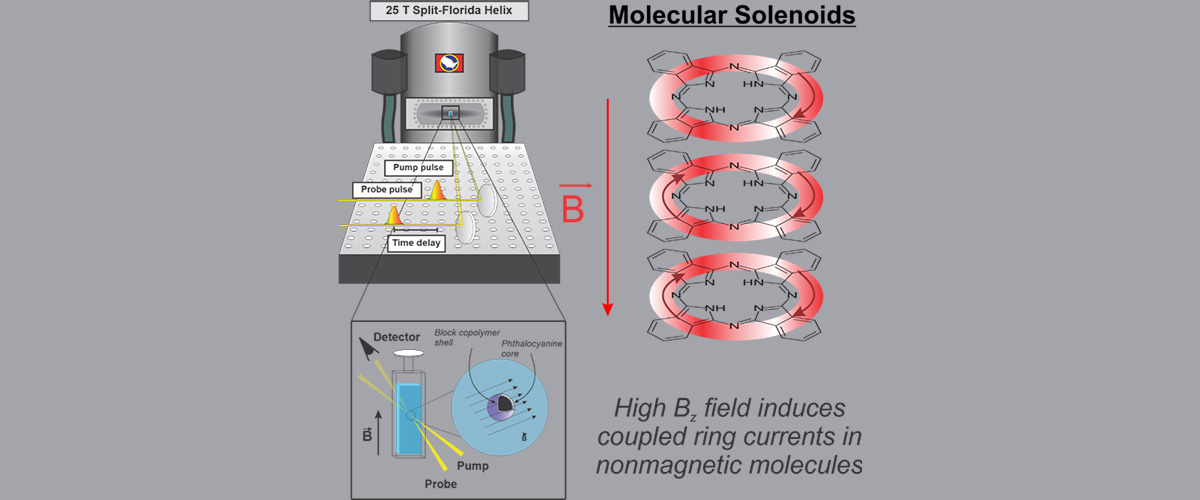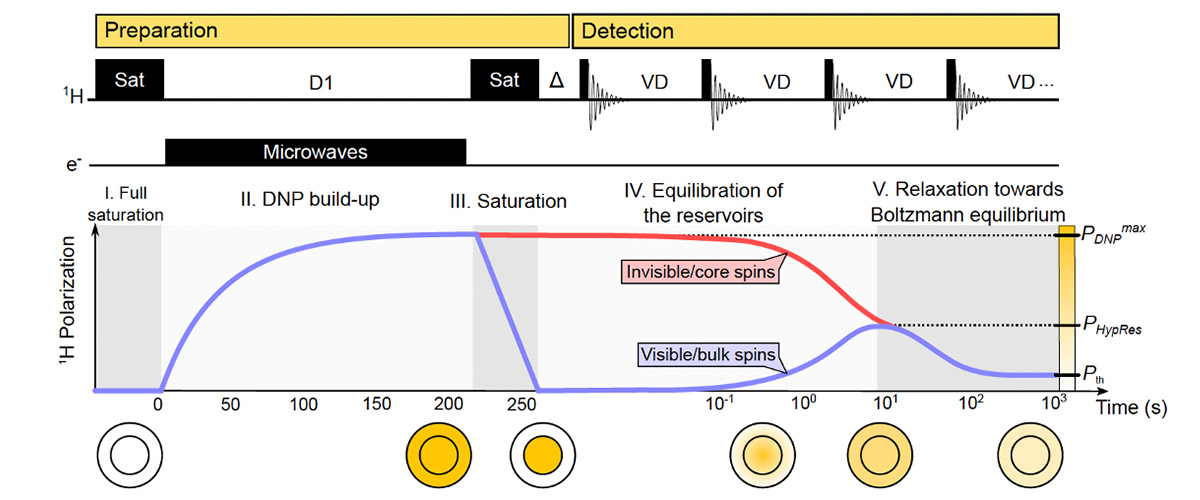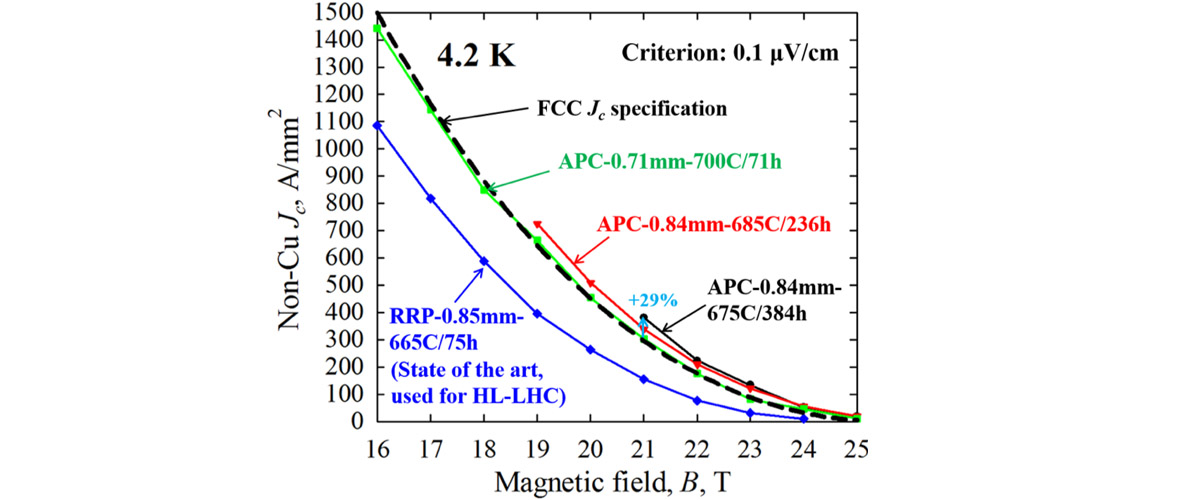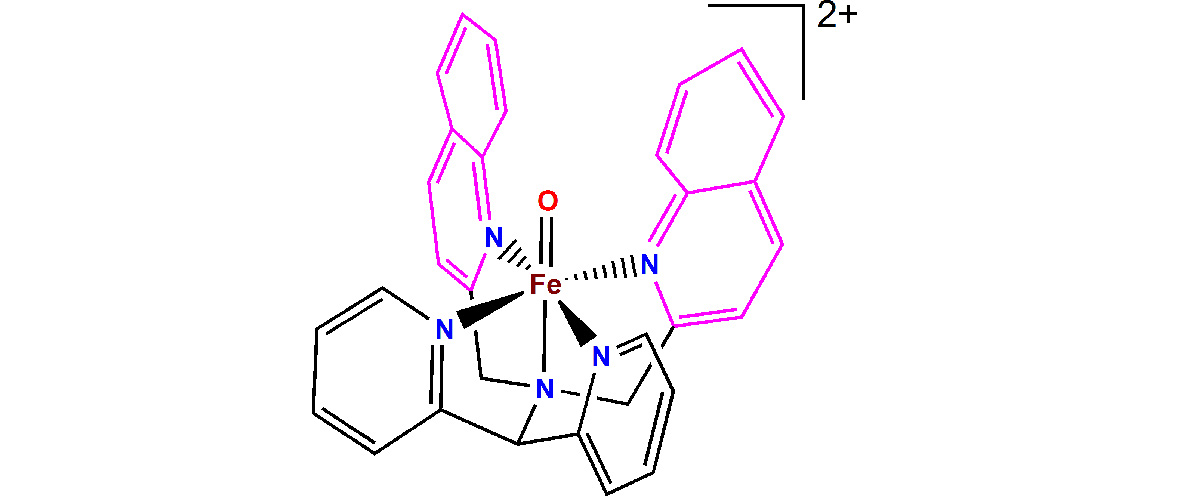What did scientists discover?
Using ultrafast spectroscopy at high magnetic fields, MagLab users discovered that circulating electron currents affect the properties of electrons in "nonmagnetic" aromatic chromophores, the part of a molecule that is responsible for its color. While this effect is small in individual molecules, researchers theoretically predicted and experimentally observed that groups of aromatic chromophores can act as "molecular solenoids" to enhance or quench the observed magnetic field effect of the ring currents, depending on their intermolecular orientations.
Why is this important?
Modern society relies on motors, the interaction of magnetic fields and circular electron currents in metal coils (solenoids). However, most attempts to design magneto-sensitive organic devices rely on materials already possessing intrinsic magnetism. Discovering the existence of magnetic field-induced ring currents in "nonmagnetic" aromatic chromophores - and are also controllable by both magnetic field strength and simple material properties - greatly expands the scope of potential materials to be considered for multifunctional magnetic technologies.
Who did the research?
Bryan Kudisch1, Margherita Maiuri1,2, Luca Moretti1,2, Maria B. Oviedo1,3,4, Leon Wang1, Daniel G. Oblinsky1, Robert K. Prud'homme1, Bryan M. Wong3, Stephen A. McGill5, Gregory D. Scholes1
1Princeton University; 2Politecnico di Milano; 3University of California, Riverside; 4Universidad Nacional de Cordoba; 5National MagLab
Why did they need the MagLab?
The MagLab's Split-Florida Helix magnet seamlessly integrates high magnetic fields with the ability to perform advanced optical spectroscopy, allowing these users to experimentally probe this novel magnetic field effect. These experiments required shining laser light directly onto the samples at the center of the magnetic field without the distortion that results from indirect illumination, for example, via optical fibers.
Details for scientists
- View or download the expert-level Science Highlight, Inducing Magnetic Ring Currents in Non-Magnetic Aromatic Molecules: A Finding From the 25 T Split-Florida Helix
- Read the full-length publication, Ring currents modulate optoelectronic properties of aromatic chromophores at 25 T, in Proceedings of the National Academies of Science
Funding
This research was funded by the following grants: Funding Grants: S.A. McGill, G.D. Scholes (DMR-1229217 and Princeton Innovation Fund); G.S. Boebinger (NSF DMR-1644779)
For more information, contact Tim Murphy.






